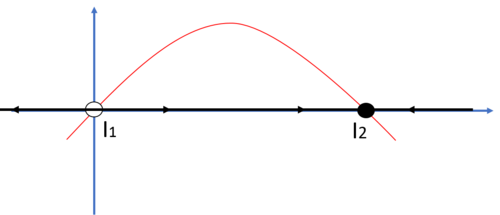Science:Math Exam Resources/Courses/MATH102/December 2015/Question 18 (c)
{{#incat:MER QGQ flag|{{#incat:MER QGH flag|{{#incat:MER QGS flag|}}}}}}
• Q1 • Q2 • Q3 • Q4 • Q5 • Q6 • Q7 • Q8 • Q9 • Q10 (a) • Q10 (b) • Q11 • Q12 • Q13 • Q14 (a) • Q14 (b) • Q15 • Q16 • Q17 • Q18 (a) • Q18 (b) • Q18 (c) • Q18 (d) • Q19 (a) • Q19 (b) • Q19 (c) • Q19 (d) • Q19 (e) •
Question 18 (c) |
|---|
|
A dangerous infectious disease spreads through Vancouver as described by the differential equation
where is the transmission rate constant, is the total population size (constant), is the recovery rate and is the number of infected individuals. Assume that . (c) Sketch the phase line for the differential equation. |
|
Make sure you understand the problem fully: What is the question asking you to do? Are there specific conditions or constraints that you should take note of? How will you know if your answer is correct from your work only? Can you rephrase the question in your own words in a way that makes sense to you? |
|
If you are stuck, check the hint below. Consider it for a while. Does it give you a new idea on how to approach the problem? If so, try it! |
Hint |
|---|
|
For given differential equation , if on the interval , then is increasing on the interval, while if on the interval , then is decreasing on it. |
|
Checking a solution serves two purposes: helping you if, after having used the hint, you still are stuck on the problem; or if you have solved the problem and would like to check your work.
|
Solution |
|---|
|
First, draw the graph of the function . (In the figure below, the red line is the graph of ) Note that in the part (a), we find two steady state solutions and . (i.e., )
By the hint, this means that on and , is decreasing, so that we have the left arrows in these intervals on the phase line. On the other hand, on , is increasing and hence we get the right arrow.
To summarize, we obtain the following phase line: |
{{#incat:MER CT flag||
}}


























